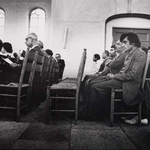Religion in the Modern Netherlands and the Problems of Pluralism
DOI:
https://doi.org/10.18352/bmgn-lchr.7121Keywords:
Church and State, Pillarization, ReligionAbstract
The religious history of the Netherlands during the last two centuries exhibits some of the same dynamics and tensions as those evidenced in neighbouring countries. This article selects from religious history three historiographical issues salient to transnational patterns. The first pertains to Dutch churchstate relations in the nineteenth century, most notably a relatively early disestablishment. The second theme concerns the so-called ‘pillarization’ (verzuiling) of Dutch society, and to what extent pillarization – to the extent it is a useful concept at all – can be regarded as a quintessentially ‘Dutch’ way to manage religious pluralism.
The last theme focuses on secularization, a concept which historians have used to analyse the decline of organized religion in the Netherlands, particularly the sharp decline in religious participation and adherence after 1960. Religion, however, has remained an important focus of debate in recent decades, as the Dutch sought again to renegotiate the politics of pluralism.
This article is part of the special issue 'The International Relevance of Dutch History'.
Downloads

Downloads
Published
Issue
Section
License
Authors who publish with this journal agree to the following terms:
a) Authors retain copyright and grant the journal right of first publication with the work simultaneously licensed under a Creative Commons Attribution 4.0 International (CC BY 4.0) that allows others to share the work with an acknowledgement of the work's authorship and initial publication in this journal.
b) Authors are able to enter into separate, additional contractual arrangements for the non-exclusive distribution of the journal's published version of the work (e.g., post it to an institutional repository or publish it in a book), with an acknowledgement of its initial publication in this journal.
c) Authors are permitted to post their work online (e.g., in institutional repositories or on their website) prior to and during the submission process.
Authors are explicitly encouraged to deposit their published article in their institutional repository.











